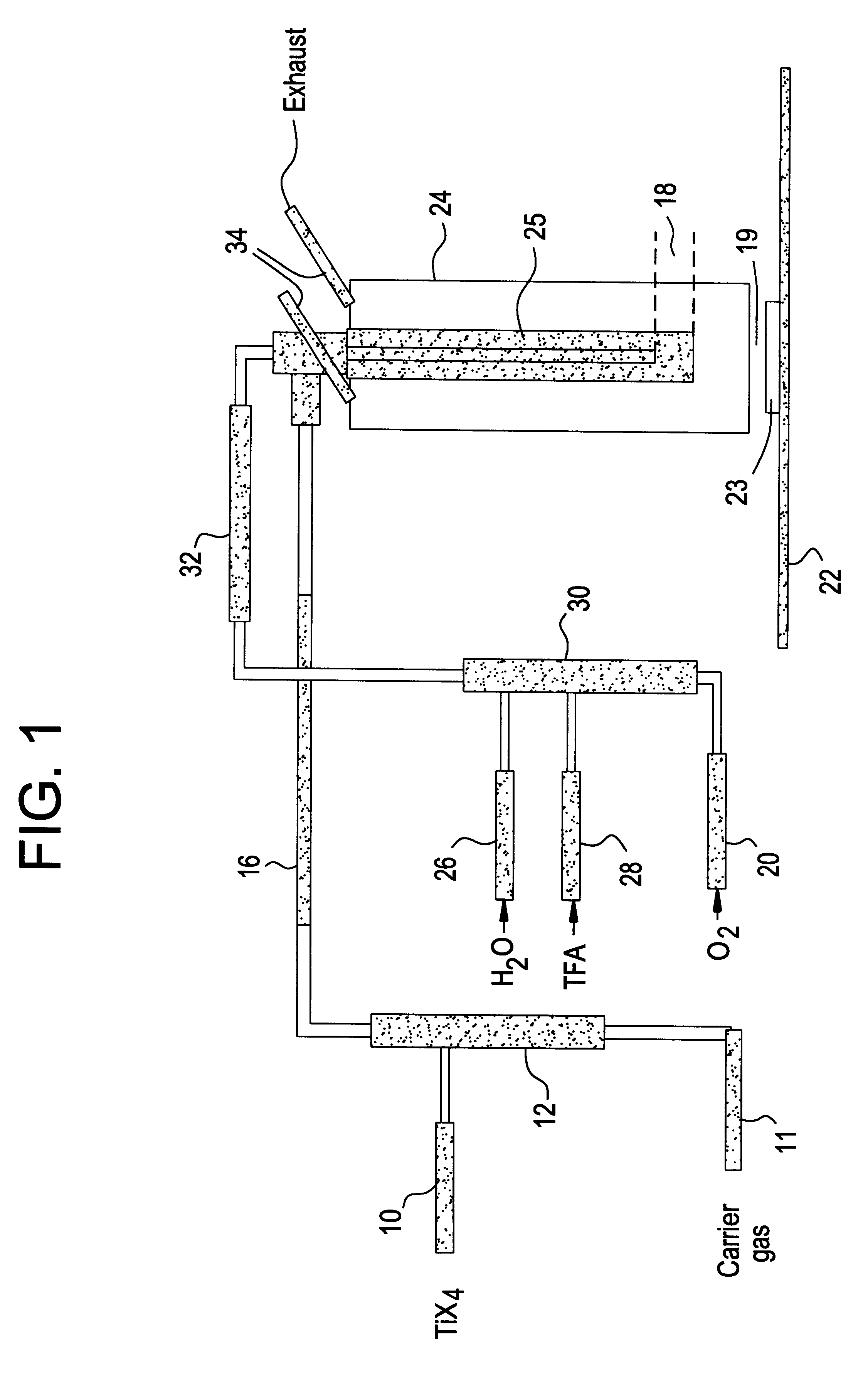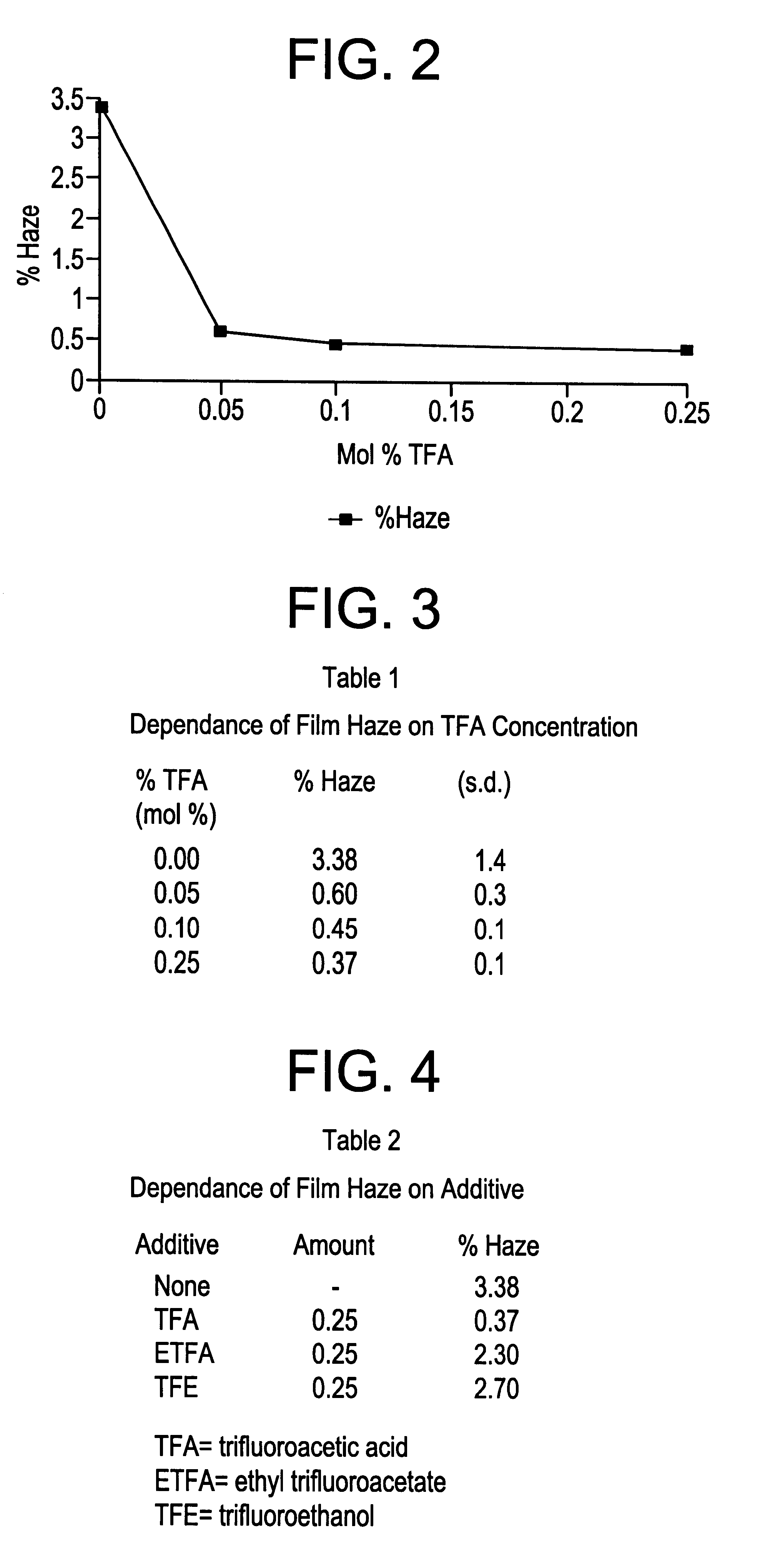Preparation of fluorine modified, low haze, titanium dioxide films
a technology of titanium dioxide and fluorine modified, which is applied in the field of titanium dioxide film preparation, can solve the problems of not producing fluorine modified tio.sub.2, not being practicable on a large scale, and not being able to achieve fluorine modified tio.sub.2 films, etc., and achieves the effects of diminishing the optical properties of glass, improving one or more properties, and convenient availability
- Summary
- Abstract
- Description
- Claims
- Application Information
AI Technical Summary
Benefits of technology
Problems solved by technology
Method used
Image
Examples
example a
The procedure of example 1 was repeated, but without trifluoroacetic acid in the gas mixture. The deposited film was clear, free of particles and had a blue-yellow reflected color. A R.I. of 2.50 and a thickness of 1294 .ANG. was measured on a Prism Coupler. Based on the corrected thickness, the deposition rate is .sup..about. 1195 .ANG. / sec. SEM analysis showed the film to be composed of coarser grains than the film deposited in Example 1. XRD analysis showed the film to be composed predominantly of the rutile phase of TiO2 with a (110) preferred orientation. The film haze was measured on a Gardner Hazemeter and found to be .sup..about. 3.1%.
Additional Examples:
The procedure of Example 1 was repeated with various levels of TFA and with other sources of fluorine. The results are given in Tables 1 and 2 and shown in FIG. 2 for TFA in terms of haze of the resulting film. As can be seen from FIG. 2, the effect of fluorine is significant in terms of haze reduction.
PUM
| Property | Measurement | Unit |
|---|---|---|
| glass temperature | aaaaa | aaaaa |
| temperature | aaaaa | aaaaa |
| temperature | aaaaa | aaaaa |
Abstract
Description
Claims
Application Information
 Login to View More
Login to View More - R&D
- Intellectual Property
- Life Sciences
- Materials
- Tech Scout
- Unparalleled Data Quality
- Higher Quality Content
- 60% Fewer Hallucinations
Browse by: Latest US Patents, China's latest patents, Technical Efficacy Thesaurus, Application Domain, Technology Topic, Popular Technical Reports.
© 2025 PatSnap. All rights reserved.Legal|Privacy policy|Modern Slavery Act Transparency Statement|Sitemap|About US| Contact US: help@patsnap.com



